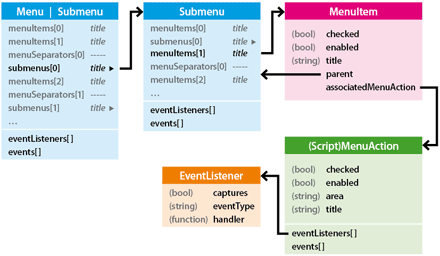IndexMatic² is very good at finding recurring text patterns in a document (brands, products, proper names, URLs…) and Wordalizer is very good at making customizable word clouds based on item frequencies. Here is how you can branch the former to the latter…
Tag : Tutorial
‘Ultrafluid’ Line Wrap in InDesign
January 28, 2015 | Extras | en | fr
A typographer friend of mine wonders about the most convenient way to create text samples having arbitrary line wraps without hyphenation. Such layout is commonly used in foundries when preparing typographical specimens. Customers should be able to visualize the native behavior of the typeface without justification artifacts, therefore the sample text must be left-justified with no custom tracking/kerning/scaling applied…
How to Operate IndexMatic & BookBarcode in InDesign CC
December 01, 2014 | Tips | en | fr
For the time being, neither IndexMatic nor BookBarcode is supposed to properly work in InDesign CC. New releases are being implemented, but this takes much more time than expected. Anyway a few weeks ago Eddy Van Hoeke from Scriptopedia found an amazing trick that makes both iX² and bB virtually compatible with the latest InDesign versions. And it boils down to one instruction…
Découvrez HurryCover en 8 mn !
August 05, 2014 | HurryCover | fr
24-Mai-2024 ARTICLE OBSOLÈTE. Rendez-vous sur la page principale de HurryCover pour de plus amples détails.
IndyFont | Fabriquer un faux italique en 7 mn chrono !
November 25, 2013 | IndyFont | fr
IndyFont peut transformer en police OpenType tout ce qui est « vectoriellement valide » dans InDesign. Ainsi, étant donné un échantilonnage de glyphes issus d'une police de caractères offrant seulement le style romain, rien n'est plus facile que de transformer ces glyphes par inclinaison puis d'exporter le jeu résultant comme une nouvelle police de caractères. À titre d'exemple, voyons comment générer une déclinaison oblique de la police Impact LT…
InGutter | Inset Spacing, Gutter and Global Width
December 13, 2012 | InGutter | en | fr
InGutter users often ask the following question: “When the script creates inner rules it also creates an inset around the whole frame. But my layout needs to go the full width of the text frame. How could I prevent InGutter from adding unwanted left and right inset?” The short answer is: you can't! OK, so can we deal with that constraint?
Cloning and Syncing Objects in ID CS5.5
February 18, 2012 | Extras | en | fr
Factorization is a profound paradigm in graphic design. Of course designers want to focus on newness, and they hate repeat what is already done. But this is a hard battle, because their work is mainly about pattern, analogy, iteration, derivation, and update, so they often have to deal with reusing the same stuff in a different way. Let's go further on this subject.
Comment paramétrer les espaces dans InDesign
May 16, 2011 | Extras | fr
Le contrôle des espaces (chasse, justification, etc.) est le lieu d'une divergence historique entre XPress et InDesign. Tandis qu'InDesign propose une douzaine d'espaces distinctes qui semblent emprisonnées dans leur sémantique Unicode, XPress a souvent été considéré comme un outil plus flexible du fait qu'il ouvre à l'utilisateur le pouvoir de définir lui-même les valeurs d'espacement et les plages de variation dont il a besoin. Cependant, le déficit d'InDesign n'est pas aussi définitif qu'il y paraît…
Composer en arabe sous InDesign CS4
July 13, 2010 | Snippets | fr
Comme l'avait souligné Thomas Phinney dans son célèbre billet « World-Ready Composer in Adobe CS4 », InDesign embarque depuis la CS4 une ribambelle d'outils secrets capables de gérer l'écriture de droite à gauche propre à certaines langues, la bidirectionnalité et autres fonctionnalités qu'on pensait jusqu'alors réservées à InDesign ME. Ces goodies restent peu documentés mais sont déjà largement expérimentables grâce au scripting.
Comment soigner les orphelins de fin de paragraphe
January 14, 2010 | Extras | fr
Pour des raisons que j'aurais du mal à appuyer sur des bases orthotypographiques solides, j'éprouve de l'empathie pour les mots isolés. Quand InDesign décide — fût-ce avec les meilleurs arguments du monde — de rejeter à la ligne le dernier terme d'un paragraphe, une sorte de frisson communautaire me saisit. Par des moyens pas toujours avouables, je tente alors de raccrocher le wagon à son prédécesseur, quitte à lui antéposer manuellement une espace insécable justifiante. Beurk ! Et si l'on appelait les « Styles Grep » à la rescousse...
Restoring the Footnotes into the Story
August 25, 2009 | Snippets | en | fr
The task of reinjecting the InDesign footnotes into your main text might seem unusual, but there are some circumstances where you will be happy to have the “UnFoot” script close at hand.
Page 2 of 2 - next entries »

